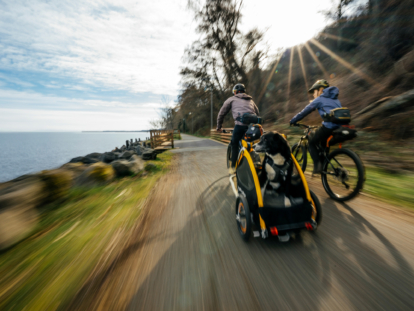Roscoe’s Last Ride
Grappling with her aging trail dog’s declining health, a mountain biker decides to give her furry best friend one last dose of singletrack.
Listen to the story
All photos by Bryn Atkinson
Tucked away on a sunny, soft corner bed in the Pacific Northwest lays an old dog named Roscoe. His face is dusted with white. He walks with a limp (when he walks at all), and his eyes are ghostly opaque. When Roscoe was younger, we were inseparable. We went to bars together, hung out at people’s houses together, hiked together and—most importantly—we rode mountain bikes together. He was the ultimate trail dog, fast, agile and smart. He knew when to get out of the way and when I needed someone to show me the line.
But 11 years of hard trail running will take a lot out of a dog. So will hepatitis, diabetes and blindness. He’s been with me since he was a 3-month-old, football-sized puppy full of wiggles and energy. Now he’s rounding on 14 years, and we’ve entered a new chapter of his life: how it ends.
Anyone that’s walked through a life cycle with a dog knows the heartstrings that this bond creates. Dogs understand us in ways that humans simply can’t, which makes the end of their lives so uniquely complex. It’s slow, heartbreaking and beautiful, all at the same time.
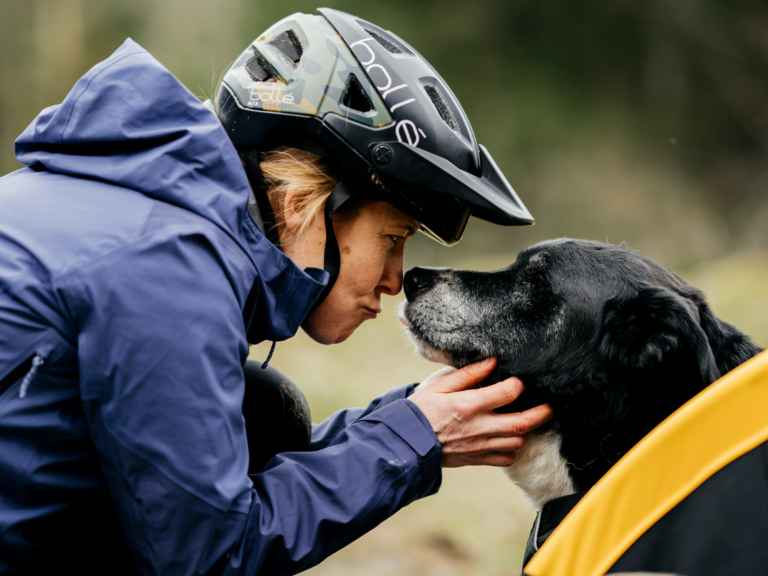
“Any dog owner is familiar with those wordless human-canine conversations. About 45 minutes after a hypoglycemic scare midway through our ride, a nose boop and face lick made me confident Roscoe felt strong enough to continue the journey.” —Lacy Kemp
Roscoe retired from trail dog life on his 12th birthday. He was diagnosed with diabetes shortly thereafter. Since then, we’ve been on an emotional roller coaster. A bout with diabetic ketoacidosis nearly killed him in June of 2021, as 20 pounds melted off his frame and he became too weak to move, eat or go to the bathroom. He lost his eyesight; his legs are weak, and he can only walk half a block or so.
None of that matters to Roscoe, though. He still lays at my feet and wags his tail and puts his paw on me during our snuggle sessions, even if he can’t see me. He’s survived being hit by a car, having tumorous masses removed and consuming numerous chocolate cakes throughout his mischievous years. He’s proven many times he wants to be here, and I made a promise to try as hard for him as he has for me. So, my partner Ryan and I set out to take Roscoe on a bikepacking trip through Washington’s Olympic Peninsula, from Port Angeles to the town of Joyce, in a pull-behind trailer.
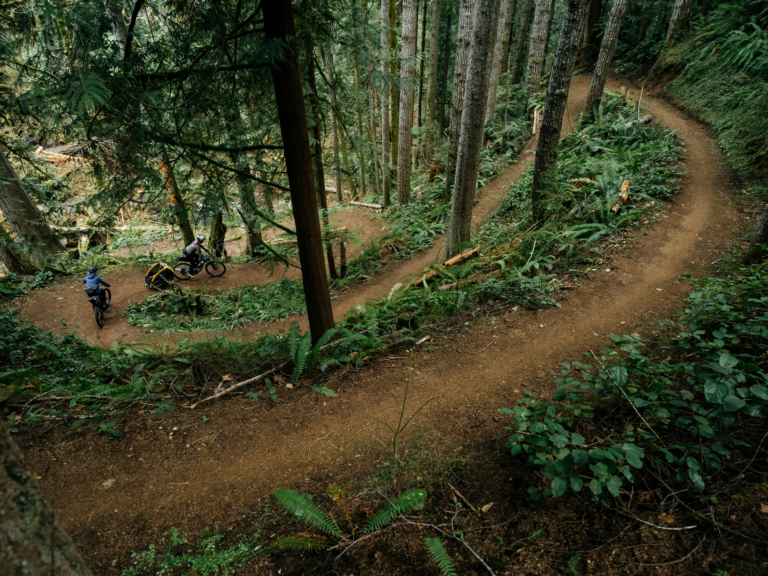
Roscoe may no longer be railing corners at warp speed, but sniffing the scenery is its own type of thrill. Ryan Short navigates the trailer around tight switchbacks on one of the Olympic Adventure Trail’s singletrack sections.
But traveling with Roscoe is a challenge even on a good day. He requires two insulin injections and five pills a day, with and without food, and his blood glucose levels need to be monitored regularly. Too much stress can cause his blood glucose to plummet and, with us being so far away from an emergency vet, would require some dire trail-side bootleg medical care.
So, why risk this?
I battled with this question for months. If we opted out of this trip, Roscoe would enjoy his safe, warm existence at home. He would walk his little 10-minute walk. He would chew on a bone. He would lay in the sunshine. But deep down I sensed he wanted something bigger. Every time his paws twitched while he was asleep, I wondered if he was hearkening back to our glory days together, days full of dirt, ferns, moist air and muddy feet.
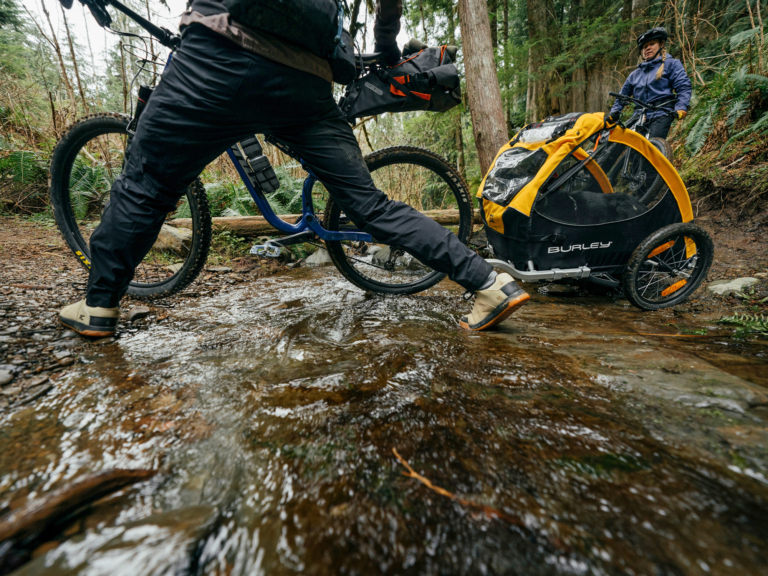
“A younger Roscoe would have bolted straight for this stream had it been on one of our rides. Now, we settle for slow, purposeful creek crossings that are safe for both the trailer and the old dog inside.” —Lacy Kemp
With his medical kit in tow, we headed out to Port Angeles. Our route was simple but full of unknowns. We’d tried pulling him in his trailer before but never on singletrack, and this route—from downtown to our camping hut near Joyce—had a fair mix of both. We knew the trailer would be just small enough to weave between trees, and hopefully stand up to the rigors of singletrack. Ryan piloted Roscoe and I rode behind so I could keep a nervous eye on “The Guy,” as we call him.
The miles ticked away, and Roscoe oscillated between curious and nonplussed. One paw slung out the back, he sniffed every whiff of ocean, pine and cedar that came his way. He wobbled across river rocks and plopped down in the icy Elwha River, drank from fresh streams and seemed genuinely happy, but his blood glucose told a different story.
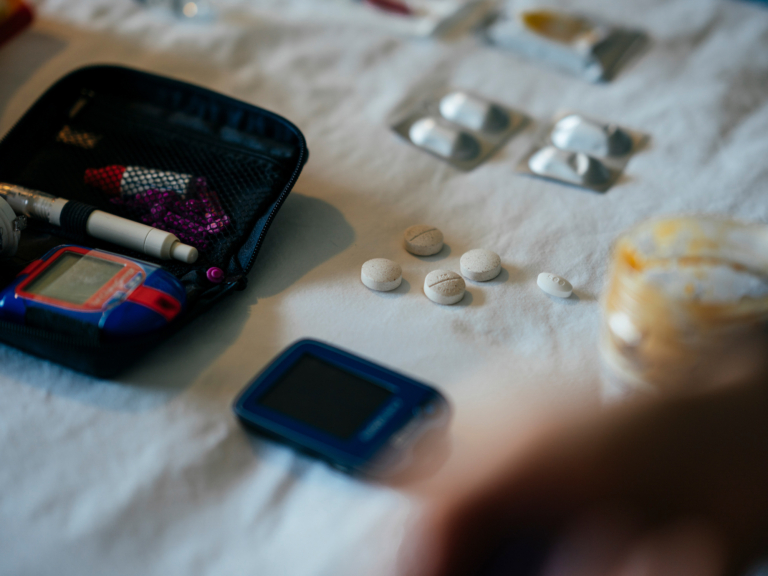
Traveling with Roscoe requires carrying a hefty amount of medicine: five pills a day for hepatitis, two syringes a day for insulin injections, insulin (and a Thermos to keep it cold), sharps storage for used injection needles, blood glucometers (both digital and manual), blood glucose test strips, lancets to obtain blood droplets for glucose testing, honey for hypoglycemic episodes and peanut butter for pill consumption.
About halfway through the ride, in our trickiest section, we did a manual blood draw and saw his sugars had dropped to a dangerously low level. The internal battle raged in my head. Is this selfish? Am I killing my dog? Or is this a reminder of all the things we loved together, of bikes and trails and haphazard adventures?
Sometimes I think Roscoe’s blood sugar crashes are his way of tricking me into feeding him the things he is never supposed to have: sugar and carbs. We rubbed honey on his gums and fed him treats, and after several rounds of such snacks, his numbers perked back up. A little honey and lot of time in the woods makes for a happy creature.
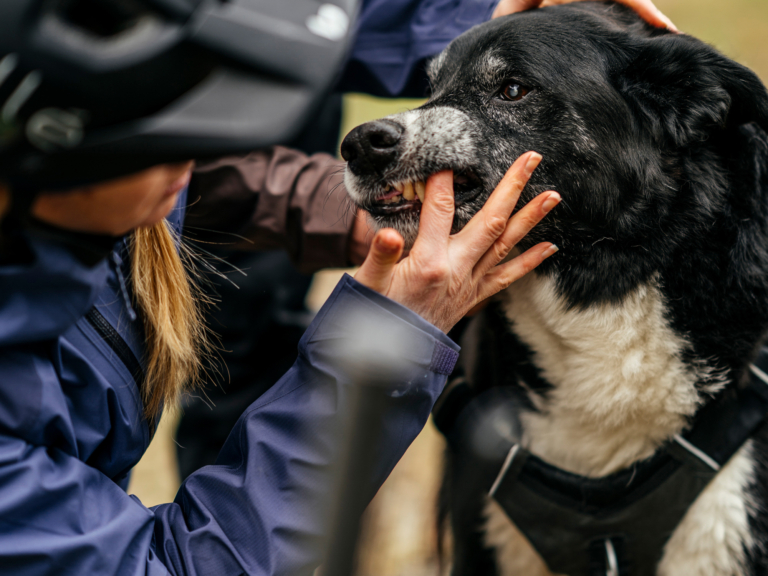
“Sometimes, mitigating diabetes requires getting your fingers dirty (and a bit sticky). After a scary-low reading on the blood glucometer, we were able to bring Roscoe’s numbers up by rubbing honey on his gums for quick glucose absorption. But, simple sugars are never a guaranteed cure.” —Lacy Kemp
As we bobbed our way through thick old-growth, his ears followed twittering robins and his head darted from side to side at the trickle of creeks and the chatter between me and Ryan. I described to Roscoe the expansive views of the San Juan Islands against the grey sky and the trail winding through the verdant moss carpeting the forest floor, reminiscent of green ’70s shag carpet. We negotiated tight, steep switchbacks, with him gazing about like an elder royal being carried through his kingdom. The moist air clung to his fur as I rode behind, watching him map out the woods with his nose and ears.
Eventually, we reached a ridge overlooking the Strait of Juan de Fuca and the San Juan Islands and opened the trailer cover. Roscoe’s nose twitched incessantly. Every bird, every smell, every hint of ocean on the breeze was his to sniff. I like to think his blindness doesn’t stop him from soaking in these wild spaces. He always seems to pause where most of us would stop to appreciate the view. He doesn’t need to see it. He knows it’s there.

“The light at the end of the tunnel” can refer to both the end of hardship or the moment between life and death; in this case, it’s the end of the 450-foot McFee Tunnel on the Spruce Railroad Trail, an abandoned rail line that was recently converted into a section of the larger Olympic Discovery Trail.
We pulled into our camp just after sunset, a small A-frame hut on the shores of the Strait of Juan de Fuca. Roscoe hopped out of his trailer and bumped into everything, using gentle steps and lack of sight to figure out his safe zones. The rain fell softly, but it wasn’t enough to deter us from building a piping-hot fire. Roscoe stood close by, leaning into me.

Whether on his bed at home or in a tent during a cold night in the woods, Roscoe’s favorite place is tucked between his humans. Ryan, Roscoe and Lacy cuddle up for a near-freezing night on the Olympic Peninsula.
It’s strange to say that I think often about his imminent death. I’m not sure why I focus on it so much, other than to pretend I’ll feel somewhat prepared when it happens. It could be tomorrow. It could be two months. We don’t know. But this trip reminded me of the moments we do have, and I am doing everything I can to savor and imprint them deep into my memory: the snuggles, the head tilts, the ear wiggles and love leans, the little arfs!—the perfect recipe for the perfect dog.
Later that night, I awoke to a shivering Roscoe pressed against me. We’d made him a bed in the corner—he’s half husky, so cold has never been a concern—but it was near freezing outside. His coat was damp from the rain, and the hut had no heat. I scooped him up, wrapped him in down blankets and tucked him between us. Outside, waves washed gently over rocks as snow flurries dusted the beach. I felt Roscoe soften and relax.
Chasing bikes takes a lot out of a dog, and it was a big day.
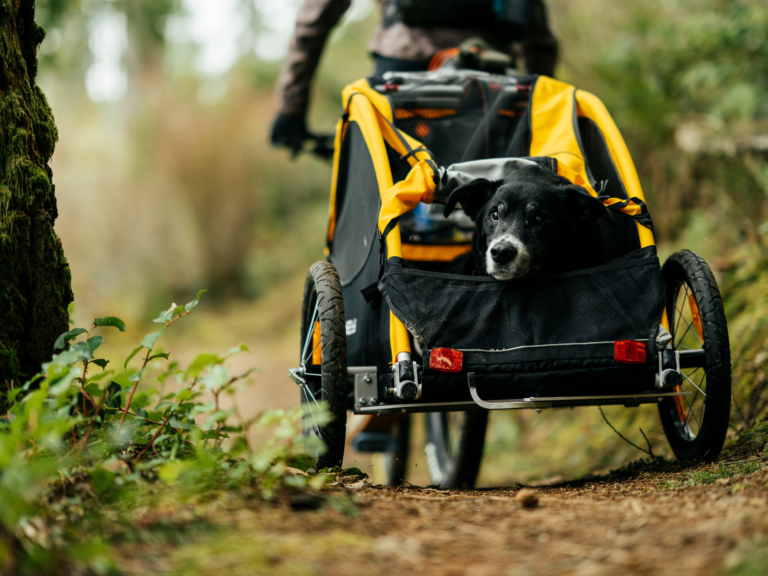
At the end of the day, it was clear who was the happiest camper. Roscoe basks in a dose of singletrack along the Olympic Adventure Trail, Washington.
